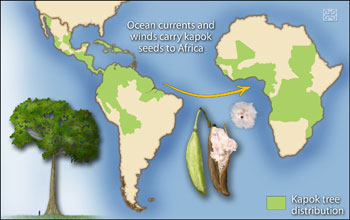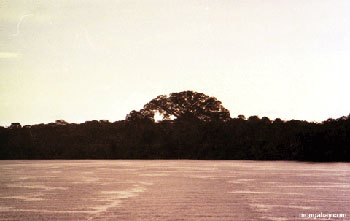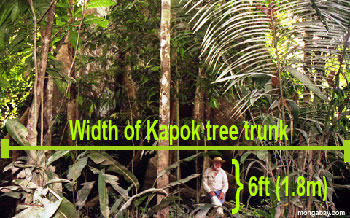Rainforest trees colonized Africa from the Amazon
Rainforest trees colonized Africa from the Amazon
mongabay.com
June 24, 2007
A giant rainforest tree is helping scientists understand similarities between African and South American rainforests, reports research published in the journal Molecular Ecology.

|
Studying seed dispersal in Ceiba pentandra, University of Michigan evolutionary ecologist Christopher Dick showed that the kapok tree species colonized Africa after the continents split 96 million years ago. Dick says that kapok seeds traveled across the Atlantic ocean, floating in the fluffy cotton-like fibers that surrounds them. The buoyant fiber has long been used in mattresses, pillows, and life jackets.
“Oceanic dispersal links the world’s rainforests,” said Dick, who’s also a researcher at the Smithsonian Tropical Research Institute in Panama. “This study is one of the first to catch that process in action at the species level. Although single seeds are very unlikely to survive an oceanic voyage and then successfully become established elsewhere, such improbable events become probable over 10 to 15 million years.'”
At 200-230 feet (60-70 meters) tall, Kapok is a species that towers over the rainforest canopy. It typically occurring in flooded areas in tropical forests, especially in the flood plains of the Amazon basin.
CITATION: Dick, C. et al (2007). Extreme long-distance dispersal of the lowland tropical rainforest tree Ceiba pentandra L. (Malvaceae) in Africa and the Neotropics. Molecular Biology online June 16, 2007

